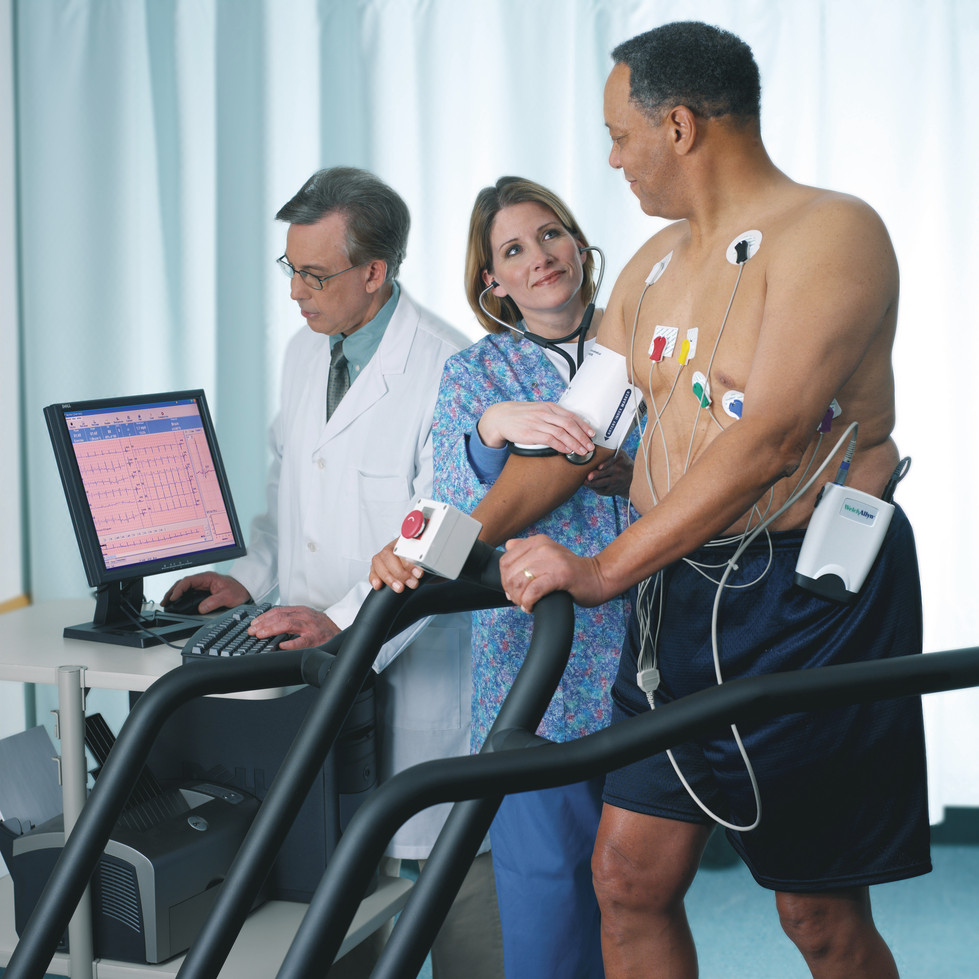Lead V1 directly faces the right ventricle and during an inferior AMI may exhibit ST elevation with concomitant right ventricular infarction. Lead V1 also faces the endocardial surface of the posterolateral left ventricle, and ST depression may reflect concomitant posterolateral infarction (as the “mirror image” of ST elevation involving posterolateral epicardial leads). In this situation, V3 also shows ST depression. In lead V1, however, ST elevation from right ventricular AMI may potentially cancel out the ST depression from posterolateral AMI to give an isoelectric ST level. Diagnosis of right ventricular infarction during an inferior AMI may therefore be aided by evaluating both V1 and V3 ST levels. Both right ventricular infarction and postero-lateral infarction worsen the prognosis of an inferior AMI.
In 7967 patients with acute inferior myocardial infarction in the Hirulog and Early Reperfusion or Occlusion-2 (HERO-2) trial, V1 ST levels were analyzed with adjustment for lead V3 ST level for predicting 30-day mortality.
V1 ST elevation at baseline, analyzed as a continuous variable, was associated with higher mortality. Unadjusted, each 0.5-mm-step increase in ST level above the isoelectric level was associated with ~25% increase in 30-day mortality; this was true whether V3 ST depression was present or not. The odds ratio for mortality was 1.21 (95% confidence interval, 1.07 to 1.37) after adjustment for inferolateral ST elevation and clinical factors and 1.24 (95% confidence interval, 1.09 to 1.40) if also adjusted for V3 ST level. In contrast, lead V1 ST depression was not associated with mortality after adjustment for V3 ST level. V1 ST elevation ≥1 mm, analyzed dichotomously in all patients, was associated with higher mortality. The odds ratio was 1.28 (95% confidence interval, 1.01 to 1.61) unadjusted, 1.51 (95% confidence interval, 1.19 to 1.92) adjusted for V3 ST level, and 1.35 (95% confidence interval, 1.04 to 1.76) adjusted for ECG and clinical factors. Persistence of V1 ST elevation ≥1 mm 60 minutes after fibrinolysis was associated with higher mortality (10.8% versus 5.5%, P<0.001).
The authors conclude that V1 ST elevation identifies patients with acute inferior myocardial infarction who are at higher risk, although because no myocardial imaging was performed, could only speculate that the mechanistic link between V1 elevation and increased mortality is due to the occurrence of right ventricular infarction.
This is important to know about in terms of prognostication, but is it useful in the diagnosis of right ventricular AMI? The authors acknowledge that the ECG diagnosis of right ventricular infarction is classically made by recording lead V4R. In an autopsy study of 43 patients, ST elevation in lead V4R had higher sensitivity and specificity than ST elevation in lead V1 in diagnosing right ventricular infarction. Similarly, ST elevation in leads V7 through V9 adds significantly to precordial ST depression in aiding the diagnosis of posterolateral AMI. The authors contend that recording leads V4R and V7 through V9 is an additional step in the performance of a standard 12-lead ECG and, although recommended, may not be routinely performed.
I will continue to do a V4R in all inferior AMIs, and a V7-8 at least in patients with ST depression in V1-3.
Prognostic Value of Lead V1 ST Elevation During Acute Inferior Myocardial Infarction
Circulation. 2010 Aug 3;122(5):463-9





